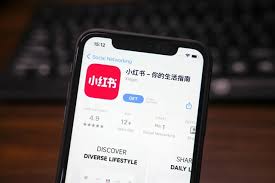Islamabad, Apr 16, 2025: The escalating trade dispute between the U.S. and China has brought unexpected winners—and one of them is DHgate, a Chinese online shopping app that’s recently seen explosive growth in the U.S. market.
Fueling this sudden spike is a viral wave on TikTok where Chinese manufacturers have started revealing the hidden truth behind luxury fashion production.
These short videos expose how high-end items like handbags from luxury brands are actually made in Chinese factories and later branded in European countries like Italy and France.
This transparency has sparked intense curiosity among American consumers, driving massive traffic to DHgate.
DHgate functions as a global e-commerce platform connecting Chinese sellers directly with international buyers.
What was once an obscure app sitting at rank 352 on the U.S. App Store skyrocketed to No. 3 in just a few days.
On April 12, 2025, it recorded a 56% spike in installs, primarily from U.S. users.
By the next day, the app experienced an astonishing 732% increase in downloads on iOS alone—an indication of just how rapidly American interest has surged.
Read More: Apple Foldable iPhone Coming in 2026 with Samsung Display
Although, the main engine behind this trend is TikTok. Influencers like @senbags2 and @lunasourcingchina are gaining attention for their insights into the sourcing process of global fashion.
Furthermore, they highlight how luxury names like Louis Vuitton, Chanel, Hermès, and Gucci often rely on Chinese manufacturing before applying high-end European branding.
Their revelations have shifted consumer perception.
However, Viewers are starting to realize that the hefty price tags on luxury goods are often more about logos and packaging than actual product quality.
As a result, many are turning to DHgate to purchase similar items at a fraction of the cost.
With over 30 million items available—including electronics, fashion, and homeware—DHgate has positioned itself as a top alternative for budget-conscious shoppers.
While some try to sidestep trade tariffs by buying directly from Chinese sellers, it’s worth noting that most imports still face standard U.S. duties.
However, this trend gained momentum as a direct reaction to former President Trump’s trade tariffs, which Chinese businesses saw as a threat to their operations.
Now, those same businesses are using transparency and social media to shift the narrative—and the market.
